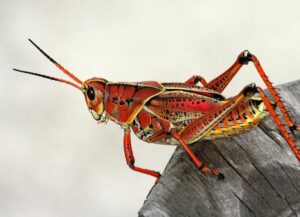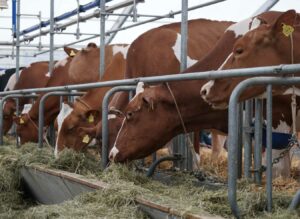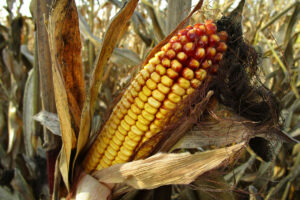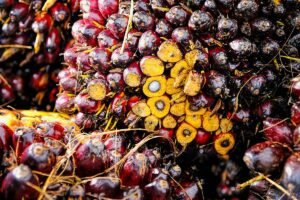Maria Villagrasa & Fernando Diaz
Hydrolyzed feather meal is obtained from grinding fresh feathers that have previously been treated with water vapor under pressure. It is a feedstuff with high crude protein content (CP; 92%) which can be used as a source of rumen undegradable protein in dairy cow rations.
One limitation to its use in animal diets however is its imbalance in essential amino acids. It contains a very high concentration of cysteine and is also high in threonine and arginine, but deficient in methionine, lysine, tryptophan and histidine. Therefore, if a suitable supplement is not included in the diet feeding hydrolyzed feather meal can lead to amino acid deficiencies.
The use of protected amino acids is an option to increase the total flow of limiting amino acids in the metabolizable protein such as lysine (Lys) and histidine (His). This option allows to improve the use of amino acids by the cow as well as reduce the urinary excretion of N and ammonia in manure.
Given the low content of Lys and His in feather meal compared to other foods, these amino acids may limit the synthesis of milk protein. Therefore, Morris and Kononoff (2020) proposed a study with the objective of evaluating the effects of lysine and histidine supplementation either protected together or separated, on the production and composition of milk, and the use of nitrogen and energy when cows were fed a diet containing hydrolyzed feather meal.
Jersey multiparous cows (12) were fed the same total mixed ration of a basal diet (corn silage, alfalfa hay and concentrate), with hydrolyzed feather meal at 5% of dry matter (DM). Four different diets were compared:
- No Lys or His supplement
- Protected His Supplement [32 g/d product (7 g/d of His digestible)];
- Protected Lys Supplement [70 g/d product (24 g/d of Digestible Lys)]
- Both Lys and His supplements were protected
To avoid an inadequate supply of other amino acids, a diet was formulated that was adequate in protein so that the contribution of Lys and His was 6.6 and 2.2% metabolizable protein, respectively. It was estimated that 70 g of protected Lys would supply 24 g of digestible Lys and that 32 g of protected His would supply 7 g of digestible His.
The composition (DM) of the feather meal was CP 89.8%; fat 8.95%; ash 2.40%; Ca 0.52%; P 0.28%; S: 2.38%. The main essential amino acids (%CP) were lysine 2.37%; histidine 1.13%; arginine 6.91%; methionine 0.70%, and tryptophan 0.50%.
Effects on plasma amino acids and 3-methylhystidine
Supplementation with protected Lys increased the plasma concentration of Lys, only when it was not supplemented with protected His [77.7 (with Lys) vs 66.0 (without His) μM], and was reduced when the two amino acids protected together were added [71.4 (with Lys e His) vs 75.0 (with His) μM]. Supplementation with His increased plasma His.
Increasing the Lys reduced plasma 3-methylhisitidine, suggesting an increase in protein accumulation and a decrease in their mobilization from muscle (main source of circulating 3-methylhistidine).
Milk production and composition
Protected His supplementation increased milk production (22.4 vs. 21.5 kg/day) and tended to increase milk protein production (0.800 vs 0.771 kg/d) but did not affect fat production, while supplementing with protected Lys did not affect milk production or components.
Energy and nitrogen utilization
Supplementation with protected Lys or His did not affect any of the variables related to energy use, except for the production of methane, which decreased with the addition of protected Lys. It also did not affect fecal or urinary excretion of N.
Supplementation with Lys tended to increase nitrogen retention (25 vs. 16 x 9 g/d) suggesting that the increased contribution of Lys improved the amino acid profile and allowed for greater protein synthesis in non-mammary tissues. This response is consistent with the decrease in protein mobilization suggested by the reduction of 3-methylhystidine with Lys supplementation.
Conclusions
The lack of production response to the lysine supplement suggests that essential amino acids may not have been limiting milk protein synthesis, or that the increase in lysine supply may not have been large enough to increase milk protein production. On the other hand, increased milk and milk protein production as a result of histidine supplementation suggest that this may be a potentially limiting amino acid in lactating dairy cow diets containing hydrolyzed feather meal.
Reference
D.L. Morris and P.J. Kononoff. 2020. Effects of rumen-protected lysine and histidine on milk production and energy and nitrogen utilization in diets containing hydrolyzed feather meal fed to lactating Jersey cows J. Dairy Sci. 103:7110–7123.
© 2020 Dairy Knowledge Center. All Rights Reserved.









